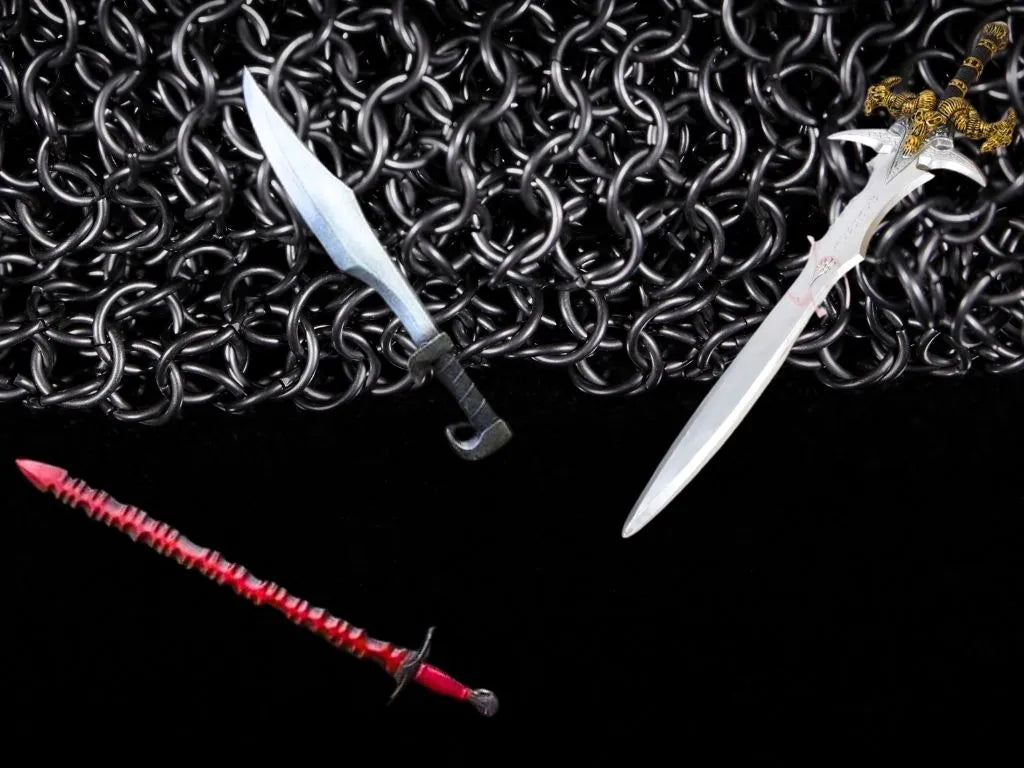Welcome to a new article from Espadas Y Más. Today will be a very direct but also very informative post. We want to talk to you about Bugei Jūhappan, the traditional 18 martial disciplines of the Japanese arts.
Check out this spectacular Yainohanzo katana!
Bugei Jūhappan
This selection of techniques was used by the samurai of the Tokugawa era in Japan. This concept was established by Hirayama Gyozo, and is based on previous Chinese concepts such as the 18 weapons of wushu.

In each Ryu-Ha the techniques and even disciplines may vary, at the discretion of each school, for this reason, the list may vary, but it is common to find the following disciplines in Bugei Jūhappan:
- Kenjutsu (Swordsmanship)
- Battojutsu (Unsheathed)
- Sojutsu (Spear fighting)
- Naginatajutsu (Fight with Naginata)
- Kyujutsu (Archery)
- Kyuba (Horse Archery)
- Suijutsu , specifically To-suijutsu (Swimming)
- Bōjutsu (stick fighting)
- Nagamono (Polearm Fighting)
- Torimono Dougu (Arrest Weapons) Weapons used by the Feudal Police of Japan to restrain or arrest someone without harming them.
- Kakushi Buki Jutsu (Concealed Weapons) Small, easily concealed hand weapons used for emergency self-protection, such as brass knuckles, etc.
- Jujutsu (Unarmed combat)
- Shurikenjutsu (Blade Throwing)
- Hojutsu (Musketeery)
- Jouhou Kaishuu (Information gathering)
- Chikujou (Fortifications)
- Angou (signaling)
- Jinei/Heihou (Strategy and Tactics)

As you can see, the list is extensive and interesting, but there is also something less known but equally relevant, the Ninja Jūhakkei , more typical of the Shinobi, which consists of the previous techniques, added to the following:
- Seishin teki kyōyō (Mental development and spiritual refinement)
- Taijutsu (Unarmed Combat: Jutaijutsu, Daken Taijutsu, Koppo Jutsu, Kosshijutsu)
- Bikenjutsu (Sword: Tantōjutsu, Kodachijutsu, Ōdachijutsu, Ninja tōjutsu, Ittojutsu, Nitojutsu)
- Sōjutsu (Spear)
- Naginatajutsu (Swordlance)
- Bisentōjutsu (Halberd)
- Kusarigamajutsu , Kyoketsu shoge (Sickle and chain, rope)
- Roku shaku bōjutsu , Bōjutsu (Staff)
- San shaku bō jutsu , jojutsu (Staff)
- Shurikenjutsu , Senbannagejutsu (Throwing blades, usually to distract)
- Kishajutsu (Mounted Archery)
- Inton jutsu (Shinobi escape techniques)
- Hokojutsu (Walking techniques)
- Hensō jutsu (Shinobi clothing and disguise techniques)
- Kakushi Bukijutsu (Hidden Weapons)
- Ninyakujutsu (Use of medicine and poisons)
- Gunryaku Heiho (Strategy)
- Tenmon, Chimon (Strategies of Heaven and Earth, meteorology)
If you notice, some disciplines are repeated, or are similar, and what changes is a greater imprint of the disciplines of concealment, espionage, infiltration, and related elements. This is due to the fact that in certain periods of Japanese history, part of the Shinobi, belonged in turn to the samurai caste, so the study of Bugei is intertwined with the needs of the study of the arts of concealment, so necessary for the Shinobi.
We hope you enjoyed it, and that you are diligent in your training!














